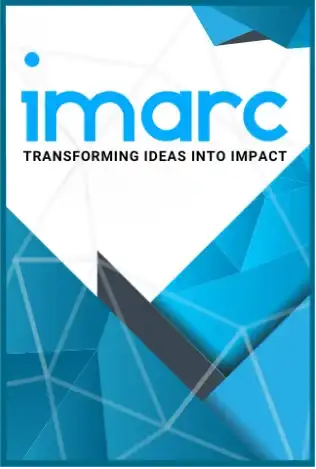
India Auto Parts Manufacturing Market Size, Share, Trends and Forecast by Component Type, Sales Channel, Vehicle Type, and Region, 2025-2033
1. Preface
2. Scope and Methodology
2.1. Objectives of the Study
2.2. Stakeholders
2.3. Data Sources
2.3.1. Primary Sources
2.3.2. Secondary Sources
2.4. Market Estimation
2.4.1. Bottom-Up Approach
2.4.2. Top-Down Approach
2.5. Forecasting Methodology
3. Executive Summary
4. India Auto Parts Manufacturing Market - Introduction
4.1. Overview
4.2. Market Dynamics
4.3. Industry Trends
4.4. Competitive Intelligence
5. India Auto Parts Manufacturing Market Landscape
5.1. Historical and Current Market Trends (2019-2024)
5.2. Market Forecast (2025-2033)
6. India Auto Parts Manufacturing Market - Breakup by Component Type
6.1. Battery
6.1.1. Overview
6.1.2. Historical and Current Market Trends (2019-2024)
6.1.3. Market Forecast (2025-2033)
6.2. Cooling System
6.2.1. Overview
6.2.2. Historical and Current Market Trends (2019-2024)
6.2.3. Market Segmentation
6.2.3.1. Compressor
6.2.3.2. Radiator
6.2.3.3. Pump
6.2.3.4. Thermostat
6.2.4. Market Forecast (2025-2033)
6.3. Underbody Components
6.3.1. Overview
6.3.2. Historical and Current Market Trends (2019-2024)
6.3.3. Market Segmentation
6.3.3.1. Brake
6.3.3.2. Exhaust
6.3.4. Market Forecast (2025-2033)
6.4. Engine Components
6.4.1. Overview
6.4.2. Historical and Current Market Trends (2019-2024)
6.4.3. Market Segmentation
6.4.3.1. Starter
6.4.3.2. Pump
6.4.3.3. Engine
6.4.3.4. Alternator
6.4.4. Market Forecast (2025-2033)
6.5. Automotive Filter
6.5.1. Overview
6.5.2. Historical and Current Market Trends (2019-2024)
6.5.3. Market Forecast (2025-2033)
6.6. Lighting Components
6.6.1. Overview
6.6.2. Historical and Current Market Trends (2019-2024)
6.6.3. Market Forecast (2025-2033)
6.7. Electrical Components
6.7.1. Overview
6.7.2. Historical and Current Market Trends (2019-2024)
6.7.3. Market Segmentation
6.7.3.1. Ignition Coil
6.7.3.2. Ignition Switch
6.7.3.3. Spark and Glow Plug
6.7.4. Market Forecast (2025-2033)
6.8. Others
6.8.1. Historical and Current Market Trends (2019-2024)
6.8.2. Market Forecast (2025-2033)
7. India Auto Parts Manufacturing Market - Breakup by Sales Channel
7.1. OEM
7.1.1. Overview
7.1.2. Historical and Current Market Trends (2019-2024)
7.1.3. Market Forecast (2025-2033)
7.2. Aftermarket
7.2.1. Overview
7.2.2. Historical and Current Market Trends (2019-2024)
7.2.3. Market Forecast (2025-2033)
8. India Auto Parts Manufacturing Market - Breakup by Vehicle Type
8.1. Passenger Cars
8.1.1. Overview
8.1.2. Historical and Current Market Trends (2019-2024)
8.1.3. Market Forecast (2025-2033)
8.2. Light Commercial Vehicles
8.2.1. Overview
8.2.2. Historical and Current Market Trends (2019-2024)
8.2.3. Market Forecast (2025-2033)
8.3. Heavy Commercial Vehicles
8.3.1. Overview
8.3.2. Historical and Current Market Trends (2019-2024)
8.3.3. Market Forecast (2025-2033)
8.4. Others
8.4.1. Historical and Current Market Trends (2019-2024)
8.4.2. Market Forecast (2025-2033)
9. India Auto Parts Manufacturing Market – Breakup by Region
9.1. North India
9.1.1. Overview
9.1.2. Historical and Current Market Trends (2019-2024)
9.1.3. Market Breakup by Component Type
9.1.4. Market Breakup by Sales Channel
9.1.5. Market Breakup by Vehicle Type
9.1.6. Key Players
9.1.7. Market Forecast (2025-2033)
9.2. South India
9.2.1. Overview
9.2.2. Historical and Current Market Trends (2019-2024)
9.2.3. Market Breakup by Component Type
9.2.4. Market Breakup by Sales Channel
9.2.5. Market Breakup by Vehicle Type
9.2.6. Key Players
9.2.7. Market Forecast (2025-2033)
9.3. East India
9.3.1. Overview
9.3.2. Historical and Current Market Trends (2019-2024)
9.3.3. Market Breakup by Component Type
9.3.4. Market Breakup by Sales Channel
9.3.5. Market Breakup by Vehicle Type
9.3.6. Key Players
9.3.7. Market Forecast (2025-2033)
9.4. West India
9.4.1. Overview
9.4.2. Historical and Current Market Trends (2019-2024)
9.4.3. Market Breakup by Component Type
9.4.4. Market Breakup by Sales Channel
9.4.5. Market Breakup by Vehicle Type
9.4.6. Key Players
9.4.7. Market Forecast (2025-2033)
10. India Auto Parts Manufacturing Market – Competitive Landscape
10.1. Overview
10.2. Market Structure
10.3. Market Player Positioning
10.4. Top Winning Strategies
10.5. Competitive Dashboard
10.6. Company Evaluation Quadrant
11. Profiles of Key Players
11.1. Company A
11.1.1. Business Overview
11.1.2. Products Offered
11.1.3. Business Strategies
11.1.4. SWOT Analysis
11.1.5. Major News and Events
11.2. Company B
11.2.1. Business Overview
11.2.2. Products Offered
11.2.3. Business Strategies
11.2.4. SWOT Analysis
11.2.5. Major News and Events
11.3. Company C
11.3.1. Business Overview
11.3.2. Products Offered
11.3.3. Business Strategies
11.3.4. SWOT Analysis
11.3.5. Major News and Events
11.4. Company D
11.4.1. Business Overview
11.4.2. Products Offered
11.4.3. Business Strategies
11.4.4. SWOT Analysis
11.4.5. Major News and Events
11.5. Company E
11.5.1. Business Overview
11.5.2. Products Offered
11.5.3. Business Strategies
11.5.4. SWOT Analysis
11.5.5. Major News and Events
Company names have not been provided here as this is a sample TOC. The complete list is provided in the report.
12. India Auto Parts Manufacturing Market - Industry Analysis
12.1. Drivers, Restraints, and Opportunities
12.1.1. Overview
12.1.2. Drivers
12.1.3. Restraints
12.1.4. Opportunities
12.2. Porters Five Forces Analysis
12.2.1. Overview
12.2.2. Bargaining Power of Buyers
12.2.3. Bargaining Power of Suppliers
12.2.4. Degree of Competition
12.2.5. Threat of New Entrants
12.2.6. Threat of Substitutes
12.3. Value Chain Analysis
13. Appendix
 Inquire Before Buying
Inquire Before Buying
 Speak to an Analyst
Speak to an Analyst
 Request Brochure
Request Brochure
 Request Customization
Request Customization




.webp)




.webp)












